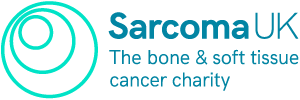Rhabdomyosarcoma is the second most common form of soft tissue sarcoma to occur in teenagers and young adults.
The most commonly affected areas are the head and neck, arms and legs, trunk, bladder and genital area.
There are four main types of rhabdomyosarcoma:
- Pleomorphic rhabdomyosarcoma (occurs mainly in adults)
- Alveolar rhabdomyosarcoma (occurs mainly in older children and teenagers)
- Embryonal rhabdomyosarcoma (occurs mainly in young children)
- Spindle cell / sclerosing rhabdomyosarcoma (a rare variant of embryonal rhabdomyosarcoma that can affect adults and children)
Please note that this information is specific to rhabdomyosarcoma that occurs in teenagers and young adults.
Signs and symptoms
Symptoms of rhabdomyosarcoma can vary depending on the size and location of your tumour.
Symptoms may include:
- a blockage and discharge from the nose or throat
- swelling around the eye, where the eye seems to be protruding (or pushed forward)
- pain or discomfort in the tummy
- difficulty going to the toilet (constipation)
- blood in the urine
- difficulty passing urine
Diagnosis
If your GP suspects that you may have rhabdomyosarcoma, they should refer you to a specialist centre or hospital for further tests.
You will have a physical examination at the specialist centre or hospital. You may be given a blood test to check your general health.
You may also have a number of tests, including a chest X-ray, a biopsy, an MRI or a CT scan. You can read more about scans and tests here.
Treatment
Treatment for rhabdomyosarcoma will vary depending on the size and location of your tumour. Rhabdomyosarcoma is often treated through a combination of surgery, chemotherapy and radiotherapy.
Surgery
During surgery, the surgeon will remove your tumour and will aim to take out an area of normal tissue around it too. This is known as taking a margin.
The tissue will then be examined to make sure there are no cancerous cells and that the margins are clear. This is done because clear margins reduce the risk of the cancer coming back.
Chemotherapy
Chemotherapy uses anti-cancer drugs to destroy cancer cells. It is sometimes used:
- before surgery to reduce the size of the tumour so it can be operated on and removed (neo-adjuvant chemotherapy)
- after surgery to kill off any local cancer cells which remain in the area of the tumour (adjuvant chemotherapy)
Radiotherapy
Radiotherapy uses high-energy radiation beams to destroy cancer cells. It can be used before, after, or alongside other treatment methods.
Proton Beam Therapy (PBT) is a form of radiotherapy that can sometimes be used to treat rhabdomyosarcoma in young people. PBT uses proton radiation, rather than x-rays. It is sometimes preferred in treating young people because it carries a lower risk of damaging any healthy tissue.
After treatment
After treatment, you will be monitored closely and will have regular follow-up appointments to check for symptoms and side-effects.
If you have any specific questions or concerns about your treatment and follow up, you should contact your doctor.












